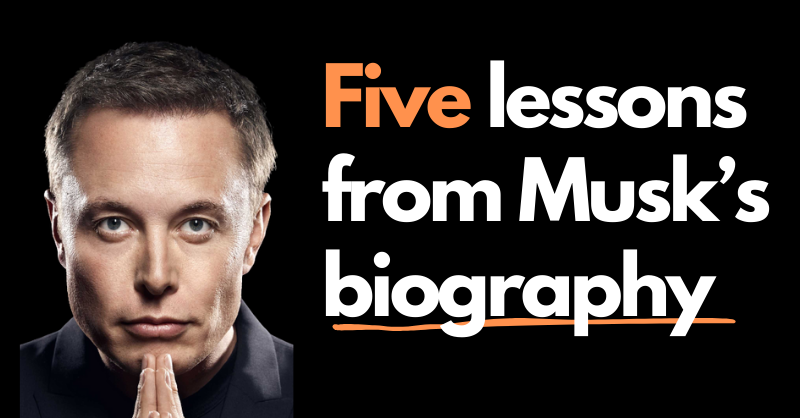Lessons from Elon’s Biography

I finished reading Walter Isaacson’s Elon Musk biography this past week. It’s awesome! Definitely one of my favorite biographies and a book I’ll return to many times.
The dude obviously understands something about building transformative companies, and it's awe-inducing to see how he operates. He's also batshit crazy.
My goal with the biography was to discover the playbooks he uses to run his companies and solve problems. After reviewing my notes, I found five behaviors that seem to define the Musk method:
-
Set aggressive goals, then chase them maniacally
Elon likes to set borderline-impossible goals and drive the team to pursue them with hardcore zeal. For example: Reduce the cost of the Raptor engine tenfold, from $2m to $200k.
His goals are crystal clear, have alarmingly aggressive timelines and are usually tracked by dashboards in the factory. Teams often react negatively to this approach at first, but it consistently results in them doing far more than they throught they could. -
Effectiveness over correctness
Elon makes dozens of rapid decisions every day, knowing some may be wrong. He deliberatly sets a direction that produces a valuable outcome, even if the specific decision turns out to be wrong.
Effective CEOs are like fire-breathing dragons - they should zero in on being effective, not on making people like them. -
Embrace the algorithm
During the race to increase production to 5000 cars per week at the Freemont factory, Elon developed the algorithm. It's a 5-step design process that he repeats ad nauseam:- Make the requirements less dumb: Your requirements are definitely dumb - make them less dumb by questioning every single one.
- Delete parts and processes: If you're not adding things back in at least 10% of the time, you're not deleting enough. Be particularly cautious of “in case we need it” arguments for adding anything because there are an infinite number of cases.
- Simplify or optimize the design: Possibly the most common error of smart engineers is to optimise a thing that should not exist (see step 2).
- Accelerate cycle time: You can always go faster.
- Automate: But be careful of over-automation.
-
Define specific ownership for every part and process
Each requirement, part and process must be accountable to a single person, not a department. You must be able to ask that person about its relevance and purpose. -
Be unreasonably focused on details
Leaders must understand the entire stack of the work their teams are responsible for. You can’t do that sitting in your office - you have to spend time on the factory floor. When working on improving the design of Tesla’s solar tiles, he was up on the roof with the technicians installing the tiles and asked them dozens of questions about every aspect.
He creates simple systems to figure out where to hyperfocus. At the Freemont factory, he made a dashboard that showed red and green lights for each aspect of the production line - and then went all-in on the red areas.